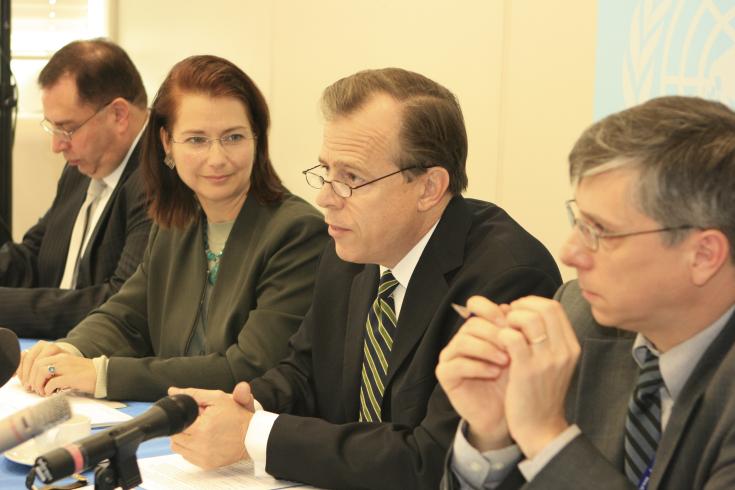The Comprehensive Nuclear-Test- Ban Treaty for Journalists: The Road Ahead
- The Test Ban Treaty is the keystone of the “somewhat audacious architecture we are all involved in erecting to have a world without nuclear weapons.” (Glyn Davies, the US Permanent Representative to the United Nations in Vienna)
- the ‘’vast majority,” 175 countries, participating in the United Nations General Assembly’s First Committee, which deals with disarmament and security, and meets every October for four to five weeks, voted in support of entry into force of the Treaty last month. They included seven of the nine countries without whose ratification the Treaty cannot enter into force, China, Egypt, Indonesia, Iran, Israel, Pakistan and the United States. (Annika Thunborg, CTBTO Spokesperson)
- China and Indonesia are likely to ratify the Treaty at the same time the United States ratifies it. And once the five nuclear weapons States (China, France, United Kingdom, Russia and the United States) are all “on board” it will indicate a very strong commitment. (Lucien Scotti, Permament Mission of France to the United Nations)
- the Comprehensive Nuclear-Test-Ban Treaty will “ïdeally” be presented to the US Senate for ratification in the late summer of next year, or early in 2011. A decade has elapsed since the Treaty was last considered by the US and the ground for it has to be prepared with the public and members of the Senate. (Davies) currently there are 266 monitoring facilities installed in over 80 countries transmitting seismic, infrasound, hydroacoustic, and radionuclide data to Vienna. The establishment of a verification regime to support a treaty before it enters into force is unusual but was enshrined in its development. Up to 25 additional monitoring stations will be installed next year. The final total will be 337. (Thunborg)
- although the task of winning entry into force for the Treaty will not be easy, the US administration is optimistic about its prospects. Issues, such as health care and financial recovery, have to be worked through Congress first before the Treaty is put to the Senate. (Davies)
- one conclusion of the International Scientific Studies Conference held in Vienna in June, 2009, is that no nuclear test can go undetected. (Scotti)
- Israel, Iran and Egypt, three of the nine countries whose ratification is required before the Treaty can come into force are “very active members” of the Preparatory Commission for the Comprehensive Nuclear-Test-Ban Treaty Organization (CTBTO) and are on record that they support the Treaty. (Thunborg)
- The Treaty has a strong commitment of support from France and Morocco, whose foreign ministers were co-presidents of the conference in September on faciliting entry into force of the Treaty. (Scotti)

From left to right: Tariq Rauf, Head, Verification and Security Policy Coordination (IAEA), Annika Thunborg (CTBTO Spokesperson), Ambassador Glyn Davies (the US Permanent Representative to the United Nations in Vienna) and Counsellor Lucien Scotti (Permanent Mission of France to the United Nations)
13 Nov 2009
